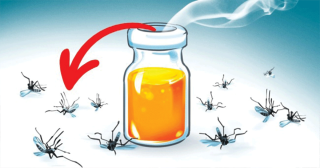9 Foods We’ve Been Washing Incorrectly
We often take food washing for granted, assuming a quick rinse under the tap is enough to clean our fruits, vegetables, and other produce. However, many foods require specific washing methods to properly remove dirt, bacteria, pesticides, and chemicals. Here are 9 foods that most of us have been washing incorrectly and how to clean them properly for safer consumption.
1. Leafy Greens (Lettuce, Spinach, Kale)
The Mistake:
Many people give leafy greens a quick rinse under cold water, but this doesn’t fully remove dirt, pesticides, or bacteria that may be hiding in the layers of the leaves.
How to Wash Correctly:
•Separate the leaves and soak them in a bowl of cold water for 2-3 minutes to loosen dirt and debris.
•Swirl the leaves around gently and let the dirt sink to the bottom.
•Drain and rinse the leaves under running water.
•Use a salad spinner to remove excess moisture.
2. Berries (Strawberries, Blueberries, Raspberries)
The Mistake:
Rinsing berries under running water can cause them to absorb moisture and spoil faster. Also, berries often come with pesticides or mold spores that a quick rinse won’t fully remove.
How to Wash Correctly:
•Wash berries in a solution of 1 part vinegar to 3 parts water. The vinegar helps kill mold spores and bacteria.
•Soak for 5-10 minutes, then rinse thoroughly with cold water to remove the vinegar taste.
•Let them air dry on paper towels or a cloth before storing.
3. Root Vegetables (Potatoes, Carrots, Beets)
The Mistake:
Rinsing root vegetables quickly under the tap doesn’t always remove the dirt and bacteria stuck in the crevices and skin.
How to Wash Correctly:
•Use a vegetable brush to scrub the surfaces of root vegetables under running water.
•Pay special attention to nooks and crannies where dirt can collect, even if you plan to peel the vegetables.
•For beets, leave the skin on while washing, and peel after cooking.
4. Mushrooms
The Mistake:
Some people believe mushrooms should never be washed because they absorb water easily, which makes them soggy during cooking. Others simply rinse them quickly, leaving behind dirt and debris.
How to Wash Correctly:
•Quickly rinse mushrooms under cold water or gently wipe them with a damp cloth.
•Avoid soaking them, as they can absorb water and become mushy.
•Pat dry with a paper towel to remove excess moisture before cooking.
5. Rice
The Mistake:
Many people skip washing rice altogether or give it a quick rinse, but this doesn’t remove all the excess starch, which can lead to clumpy or sticky rice.
How to Wash Correctly:
•Place rice in a fine mesh strainer or bowl and rinse under cold water.
•Swirl the rice around in the water with your hand, and drain the cloudy water.
•Repeat the process 2-3 times until the water runs clear. This helps remove excess starch and any contaminants.
6. Citrus Fruits (Oranges, Lemons, Limes)
The Mistake:
Since we don’t usually eat the peel, many people skip washing citrus fruits entirely. However, the outer skin can carry pesticides, dirt, or bacteria that can transfer to the fruit when cut.
How to Wash Correctly:
•Wash citrus fruits under warm running water, using a vegetable brush to scrub the outer skin thoroughly.
•Rinse well before cutting or peeling to prevent contaminants from transferring to the fruit inside.
7. Cucumbers and Zucchini
The Mistake:
A quick rinse doesn’t always clean the waxy coating, dirt, or pesticides found on cucumbers and zucchinis, especially when eaten with the skin on.
How to Wash Correctly:
•Scrub cucumbers and zucchinis under running water using a vegetable brush to remove any residue.
•You can also soak them in a mixture of water and vinegar for extra cleaning power.
•Rinse thoroughly after soaking and dry with a clean cloth.
8. Apples and Pears
The Mistake:
Rinsing apples and pears under water might remove some surface dirt, but it won’t eliminate pesticides or the waxy coatings often used to preserve them.
How to Wash Correctly:
•Use a mixture of water and baking soda to scrub the surface of apples and pears.
•Let them soak in the solution for about 15 minutes before rinsing with cold water.
•For apples with a thick wax coating, a brush can help remove residue more effectively.
9. Melons (Watermelons, Cantaloupes, Honeydew)
The Mistake:
Since we eat the flesh inside, not the rind, many people don’t bother washing melons before cutting them. However, the outer surface can harbor bacteria, which can transfer to the fruit when you slice through the skin.
How to Wash Correctly:
•Wash melons under running water and scrub the rind with a vegetable brush before cutting.
•Pat dry with a clean towel before slicing to reduce bacteria transfer from the skin to the flesh.
Final Thoughts
Washing your food properly is an important step in ensuring that it’s clean, safe, and free of contaminants like dirt, bacteria, and pesticides. By taking the time to wash these 9 foods correctly, you’ll not only protect your health but also enhance the quality and flavor of your meals.










